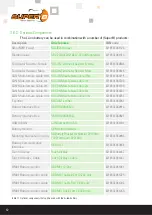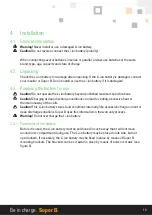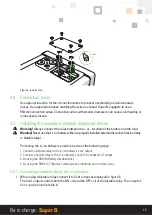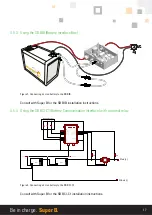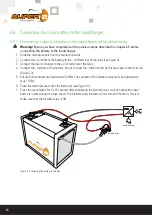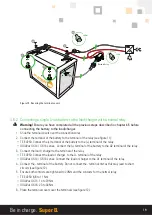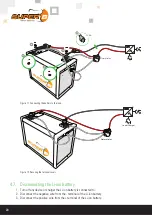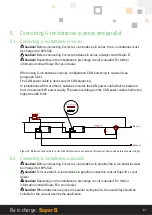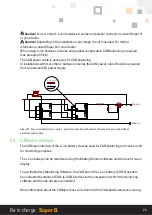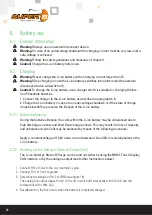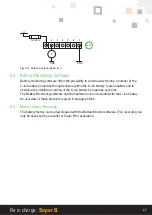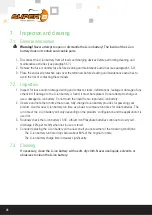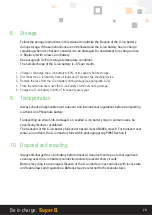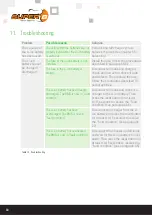
26
6. Battery use
6.1. General information
!
Warning!
Always use an external disconnect device.
!
Warning!
In case of an undervoltage shutdown the charging current must be very low until a
safe voltage is achieved.
!
Warning!
Follow the safety guidelines and measures of chapter 1.
!
Caution!
Charge the Li-ion battery before use.
6.2. Charging
!
Warning!
Never charge the Li-ion battery with a charging current larger than 1C.
!
Warning!
Stop charging in case the Li-ion battery switches into alarm mode (the external
disconnect device will switch off).
!
Caution!
To charge the Li-ion battery, use a charger which is suitable for charging Lithium
Iron Phosphate batteries.
1. Connect the charger to the Li-ion battery as described in paragraph 4.6.
2. Charge the Li-ion battery in case of an under-voltage shutdown or if the state of charge
drops below 20% to preserve the lifespan of the Li-ion battery.
6.2.1. Battery balancing
During the batteries lifespan, the cells within the Li-ion battery may be unbalanced due to
high discharge currents and short float charge periods. This may result in a loss of capacity
and unbalanced cells. Cells may be balanced by means of the following procedure:
Apply a constant voltage of 14.4V and a current between 1A and 2A to manually balance the
Li-ion battery.
6.2.2. Reading out the battery’s State of Charge (SoC)
The Li-ion battery’s State of Charge can be read out either by using the BM01, Touch Display,
CAN network, or by the analogue output (see further instructions below).
1. Connect Pin1 of Con2 to the Li-ion battery’s + pole.
2. Connect Pin 7 of Con2 to ground.
3. Determine the voltage at Pin 2 of CON2 (see figure 18).
The analog SoC output ranges from 0 to 10 volt, in which 0V corresponds with 0% SoC and 10V
corresponds with 100% SoC.
4. Recalibration of the SoC occurs when the battery is completely charged.

